Like all consoles, the Genesis has its fair share of canceled titles. Throughout almost a decade of support, developers from all regions had games that were shelved due to budget problems, studio closures, or changing publisher priorities. Gamers were enticed with early photos of these titles in magazines like Mega Play and Game Fan only to be left waiting at the consumer altar, money in hand, when they never arrived.
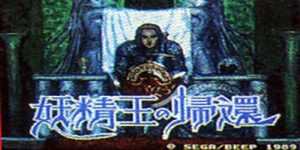
I can remember seeing that infamous picture of Sega’s Moon Dancer in the May 1990 issue of Electronic Gaming Monthly #10 (sadly, none of the five Mega Drive games on that page made it to North America). The game looked intriguing, though there really wasn’t much information in that blurb to make an informed opinion. It was described as a “six-meg graphic/text adventure” and promised various locations and multiple characters. I mentally added it to the category of “titles I’ll look into later as more details emerge” and moved on to more eye-catching releases like Batman and Vermilion (Sword of Vermilion).
But there were no more details to come. Moon Dancer kind of fell off the radar after that. No more pictures appeared in U.S. magazines, and that was it. Moon Dancer faded away into the annals of history, forgotten along with the myriad of other Mega Drive titles that were quietly canceled. Back then, without the constant online media deluge to which modern gamers are exposed daily, those few screen shots were all there was. If a game stopped appearing for a few consecutive issues in magazines, one was simply left to ponder its fate while scanning each new issue for some mention, clinging to dimming hope that the silence was owed to developers being too busy working to speak. As with most of these cases, the hope soon died, and Moon Dancer was never mentioned again in the press.
A few more tibits of information popped up a quarter-century later, when a topic on the game was started on the Sega-16 forum in 2015. Member JumpingRyle translated a portion of the November 1989 Beep! article that revealed Moon Dancer to be an RPG based on a Japanese serial that ran in the magazine that year. Beep! staff joined Sega in development, and the team even included Hitoaki Minami, a Sega planner who had worked on titles like the strategy title Super Daisenryaku and Arnold Palmer Tournament Golf. Minami joined the project shortly after completing Super Daisenryaku and was assigned to the Sega Consumer Department focused on the Mega Drive. Reportedly, there was little progress made after around six months. Work was abandoned, and Minami moved on to plan on the next Daisenryaku title.
Now, thanks to some recently-translated documents (through the amazing efforts of Andrej Preradovic of Translation++), we now know a lot more about Moon Dancer and its short-lived development. What was done in those scant six months was quite intricate and elaborate. Had the game been seen through to completion and release, Mega Drive owners could have been treated to a truly unique experience.
A Tale of Revenge & Redemption
Since its initial announcement way back in the late ’80s, most English language sources have referred to Moon Dancer by that title alone. It’s full title was Moon Dancer: Yōseiō no Kikan (Return of the Fairy King). The plot revolved around a young slave named Asurairu who was a “Moon Dancer,” a slave used as a weapon and hunter by the evil overlord Wei Avun. During his enslavement, Asurairu was manipulated by his master and forced to kill his friend Kyuraon. Though his body was destroyed, Kyuraon’s soul somehow still lingered. The still-benevolent spirit intervened with Asurairu, convincing him to turn on his master and defeat him.
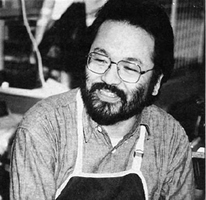
It’s likely that this story unfolds during the introduction, but there is no evidence of cut scenes or text to this effect. Regardless, here is where the game begins, in Wei Avun’s tower shortly after his defeat. The Magician of Light, Ruun-A, tells Asurairu that he must journey to the city of Luon to restore the kingdom of Shimurugunto, now fallen into corruption by rampant magic. Saving the kingdom will prevent a terrible magical calamity. As an incentive, he reveals that it is possible to revive Kyuraon by finding a magical set of armor. Asurairu and his spirit friend set out to meet with the magician in the city of Ruon. Moon Dancer’s story was divided into three parts. First, Asurairu receives Ruun-A’s message and attempts to resurrect Kyuraon. In the second part, the fate of Shimrugunto is revealed, and the final act sees the heroes hunting down three magical artifacts needed to restore the royal family of Shimurugunto.
Sega divided the kingdom of Shimurugunto into the capital city and 10 outer districts, each governed by a lord. The districts contained between four and ten cities or villages. Additionally, there were five more mountain areas, a forest, and two lakes. Humans, elves, and dwarves inhabited the kingdom, and magic was the region’s principal religion. The design of Simugrugunto was reminiscent of medieval Europe and was likely made to be a grand location mean to visually impress players upon arrival. Wei Avun’s tower was located in the province farthest from the city. As the plot unfolded, players traveled closer and closer to the great city, reaching it by game’s end.
To achieve the desired aesthetic, Sega relied on the input of talented developers like graphic designer Naoyuki Katō, a founding member of Studio Nue, the design studio that co-created the original Macross series. Having previously done artwork for the Japanese covers of games like the MSX and Sharp versions of R-Type and the NES classic Guardian Legend, Katō earned a spot on the project after being introduced to an illustrator at a graphic design job fair. She connected him with Hori Kurando, the original author of the Moon Dancer serial and a member of the development team. Katō’s wife had been involved with designing the world and setting of the obscure 1988 Japanese computer RPG Digan no Maseki, and she joined him on Moon Dancer. Along with is input on the game’s art style and world, Katō would handle the game’s opening and ending, as well as its cover and instruction manual.
Katō and Kurando focused on world-building, and Katō was instrumental in creating the game’s fantasy elements, such as the shape of towns and types of equipment and culture that could be found in each. Katō wanted the engine to use a 3D perspective, but the Mega Drive wasn’t capable of achieving his vision. The console’s reduced color palette was also a factor; its selection of darker tones reminded Katō of works by the acclaimed Japanese artist Noriyoshi Ohrai, famous for the international poster of The Empire Strikes Back and multiple covers for the Nobunaga’s Ambition series (Ohrai would also be known for illustrating several Godzilla franchise posters during the ‘90s). Ohrai’s style influenced Katō’s artwork for Moon Dancer. He and Kurando would draw things out on paper, ignoring the Mega Drive’s limitations. Then, they would adapt them to fit the console. At first, Katō did his works in monochrome, with Sega later adding color to them. This method didn’t suit him, and he felt it made the characters look “like plastic toys,” so he started over, drawing and coloring each one of them himself and then gradually reducing the colors to fit the Mega Drive.
Katō also planned to give Moon Dancer’s instruction manual a more artistic look than most Mega Drive titles had. For instance, he drew the game’s weapons all together on a single page as items in an armory instead of giving each an individual entry. The world maps would be etched onto the shields hanging from the armory wall, with each city identified by gems encrusted in each shield. It would be a treat to see these hand-drawn illustrations and how far along they were, since the manual itself never came to be. Perhaps Katō still has them somewhere, buried in a sketchbook or art portfolio…
A Deep Role-Playing Adventure
Moon Dancer was designed to play as a command-based adventure, but it didn’t really fit into a single genre. The command system was complimented by RPG elements, and the battle scenes resembled something out of turn-based strategy titles like Romance of the Three Kingdoms. At first glance, it would seem that not even Sega knew how to categorize Moon Dancer, dubbing it a “Fantasy Emotion Game,” or FEG.
The label wasn’t entirely unwarranted. Along with magic (fire, ice, earth, air, dark, light, and special) and skills-centered combat, emotions were a central part of Moon Dancer’s gameplay. Players could have up to five members in their party, and their relationships were defined by the innovative EP (Emotional Point) System that monitored Asurairu’s emotional bond with each of them, as well as the various NPCs. Kurando and Katō felt that the disembodiment of Kyuraon, one of the main characters, was the story’s most interesting element, but the bond between them wasn’t the only relationship that weighed upon the game. As the story progressed, events would determine how much each character liked or disliked Asurairu. Some members were necessary to solve certain puzzles, and EP levels also affected the party in battle, so keeping Asurairu’s companions happy was fundamental to completing the game. The multi-faceted aspect of the plot made these party members important – Asurairu could not complete his goals alone. This dynamic applied to many of the characters with whom Asurairu interacted. Depending on the state of his emotions, key characters might suddenly become friends or enemies.
The EP System was made to work alongside more traditional RPG elements. For instance, the hero had to mind his party member’s health. Their physical strength diminished over time, and if it reached zero, they were rendered unconscious and unable to move. Resting replenished their strength. Some members also had levels of offensive and defensive power that changed based on the weapons and armor they carried, and certain magic types could counter others, requiring a balanced party.
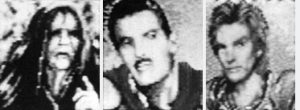
Additionally, time had a role in how things transpired, and Moon Dancer used it in an impressive and innovative way. A status bar on the right side of the screen displayed the in-game month, day, hour, and minute. A single minute of game time was equal to roughly six minutes of real time, with months running 28 days and a day ending after 20 hours. It’s unclear if game objectives had a time limit or a particular time of day when they could be completed, but players had to mind the clock if they wanted to shop for items, go to the inn, or accept quests from citizens in the town square, as not all these elements were available at all time. For example, at night the shops were closed, and the streets were less crowded. It was in the players’ interest to get to the different stores in time to shop and to question citizens before they retired for the evening. There was a lot to do in town. Each one included a variety of locations such as the square, an armorer, an innkeeper and tavern, a blacksmith, a spellmaker, a jeweler, a hospital, a craftsman, and the lord’s house. For those not willing to wait until sunrise, there was an option to advance the clock somewhat to speed things up. This time mechanic weaved into the game’s RPG features, such as upgrading equipment. New weapons brought proficiency for party members the more they were used and unlocked more powerful skills, such as a heavier versions. Remember, these relationship and time-based mechanics were being considered in 1989, more than a decade before Shenmue made players wait for stores to open. Such a thing was unheard of on consoles of the period.
The Fairy King Takes a Permanent Detour
So what happened? Looking at how complex the gameplay and world design were, it appears that Moon Dancer was pretty far along in development, but in truth Sega was only working it for a scant six months. It is neither known how much of Katō and Kurando’s work materialized, nor how far along the gameplay design had progressed. No alpha ROM has ever appeared, and there has been little to no word on Moon Dancer since it was originally announced. The April 1994 issue of Beep! MD speculated that the game was canceled after repeated delays caused it to missed its projected release window. There was still hope of a potential release, but a sluggish development cycle forced Sega to shelve Moon Dancer permanently. It’s unfortunate, as it really would have been interesting to see how far Sega pushed those gameplay mechanics. Moon Dancer could have been a unique experience on the Mega Drive, albeit one that likely never would have left Japan even if completed. Because of the challenge and cost of localization, Sega left a ton of RPGs and strategy titles in its native land. Considering that Sega’s “Fantasy Emotion Game” combined elements of both genres, it likely would have been passed over for an English-language release even if it had been finished.
We may look at some of the ideas in Moon Dancer as commonplace today, but it’s important to keep them in the proper context. In 1989, there were few console titles, if any, that used a clock to track in-game day and night transitions to affect the environment or let players decisions impact their relationships with other characters. Had it debuted in March 1990 as planned, Moon Dancer could have been a revolutionary console game and a truly unique one on the Mega Drive. Unfortunately, the Fairy King never got the chance to complete his return.
Here are some screen shots from two issues of Beep! MD in which Moon Dancer was previewed:
Sources
- “International Outlook: Moon Dancer.” Electronic Gaming Monthly, May 1990.
- “Making of Youseiou Dai 5 kai” Beep! MD, September 1989
- “Moon Dancer Preview.” Beep! MD, November 1989.
- “Vol. 10: Advanced Daisenryaku (Mega Drive).” Sega Masterpiece Album, 2004.
- “Why Are Software Release Dates Delayed?” Beep! MD, April 1990.
- “Zoku making of Youseiou Dai 1 kai” Beep! MD, March 1990

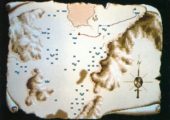
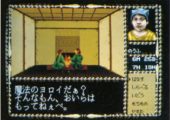
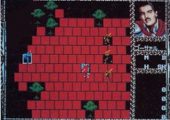
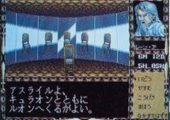
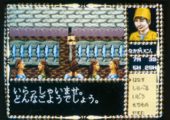
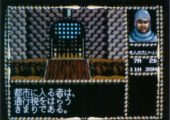
Recent Comments